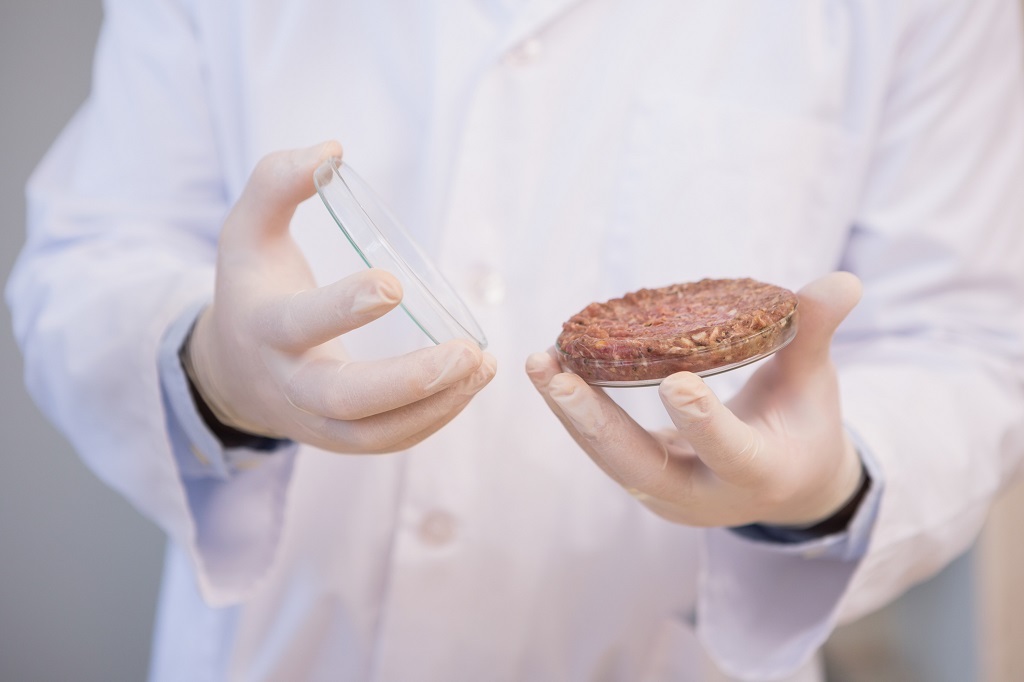
iStock / Liliboas
Meat eating can be a fraught endeavor that every person must navigate individually. In that spirit, we’ve put together this guide to commonly misunderstood meat-related terms. We won’t tell you what or how to eat, but we will give you the facts you need to make informed decisions.
Here at The New Food Economy, we aim in our meat coverage—during Meat Month, and beyond—to highlight the complex ethical, environmental, and emotional considerations that come along with eating animals. And yet we’ve always stopped short of giving our readers an objective pocket guide, something to help you navigate the many dilemmas of the meat aisle. Journalistically speaking, it’s not our place to advocate for one approach to agriculture over another. We don’t want to (and won’t) tell you how to eat.
Instead, our reporting—especially Lynne Curry’s recent feature on the many faces of “conscious carnivorism”—is energized by a different idea: that meat eating is, for some eaters, a fraught prospect that we must navigate individually. Is animal welfare what matters most, or the well-being of human workers, or the health of rural economies, or the care taken with the land itself? And how do those factors weigh against our limited resources of attention, money, and time? Ultimately, only you can decide. Our role is to help you frame the issues as clearly as possible as you work out your own, individual relationship to what and how you eat.

Alex Fine
It’s in that spirit that we’ve put together the Conscious Carnivore’s Guide to Meat. In our work as reporters, and in our daily lives as people, we’ve seen a great deal of confusion about even the most common terms folks encounter in the grocery store meat section, or at the local butcher, or on labels. Some marketing claims don’t mean what we perceive them to, and others suggest more than they really deliver. But this is a place where we as reporters and editors can be objective. We can help our readers decode the most ubiquitous marketing language and label claims—even if we can’t decide for you how much claims like “grass-fed” and “free-range” ultimately matter. That way, at least, you’ll be able base your decisions on facts.
So, here’s our guide to the most common claims applied to meat. We tried to be clear, fair, and thorough. The rest is up to you.
Organic
When applied to meat, organic certification currently has nothing to do with animal welfare. It tells us more about what livestock were fed than how they were raised. Feed must be organic—so, non-GMO and produced without the use of synthetic pesticides and herbicides. Organic meat must also be raised without the use of antibiotics, growth hormones, and animal by-products.
All-natural
Legally, the term means no artificial colors or ingredients were added, and the product is minimally processed. (Chicken nuggets can’t be “all-natural.”) On fresh meat, “natural” claims are mostly meaningless. Beyond that, the United States Department of Agriculture (USDA) Food Safety Inspection Service (FSIS), which regulates labeling terms for meat and poultry, has largely left it to producers to define the meaning of the term as it relates to their practices and to label their products accordingly.
Local
Local is not a term regulated by the government. Different retailers and individual farmers’ markets maintain their own definitions. So, “local” can mean as close as 10 miles away from a retailer or as far away as 450 miles, depending. It’s up to shoppers to ask retailers where, exactly, a product “labeled” local comes from—if it’s not specified on the label. Is the beef you buy in New York City technically “local” if it was produced in New Jersey? You’ll have to decide for yourself.

Alex Fine
Cage-free
Doesn’t mean hens have actual access to the outdoors, as many assume. Instead, cage-free eggs were produced by chickens confined inside barns much the way conventional chickens are. They don’t live in battery cages, but are still afforded less than one square foot of space per bird.
Free-range
The USDA regulates the term only for poultry raised for meat, not egg-laying hens or other livestock. Technically, birds must be given access to the outdoors—but in practice that doesn’t always happen.
Animal welfare
Animal welfare certifications are offered by a variety of third parties. “Animal Welfare Approved” is viewed as the most robust certification, requiring meaningful access to the outdoors.

Alex Fine
Pasture-raised
The term is unregulated. That said, there are some companies with their own in-house standards that are really doing good work.
Grass-fed
The United States rescinded its own grass-fed standard in 2016. Today, the term has no hard-and-fast legal definition, but several third-party certifiers offer their own standard. The best-known is the American Grassfed Association’s Certified Grassfed, which mandates that cattle spend their days outdoors unless weather makes pasture access unsafe, and prohibits all forms of feeding except outdoor grazing and a select group of dried pasture forages.
Grass-finished
Virtually all cattle in the U.S. are raised on grass. Where things become contentious is in the finishing stage—the last six months of a steer’s life. In this country, most cattle are “grain-finished,” or fed a diet of grain to bulk up muscle before slaughter and sale. One-hundred percent “grass-finished” cattle are allowed to forage or fed a diet of dried grasses until slaughter.

Alex Fine
Antibiotic-free
Not a term regulated by USDA, and essentially meaningless. Pig and poultry meat cannot legally contain antibiotic residues by the time it reaches market.
If you’re looking to be sure, buy certified organic meat, which cannot use antibiotics under the organic standards (animal welfare standards—or lack thereof—aside). Or look for products bearing a label with a claim like “no antibiotics administered”—which is more meaningful but not a claim verified by the government.
Hormone-free
Federal regulations prohibit the use of hormones in pork and chicken, so this term should not be used on labels to indicate the product is somehow superior. In beef, the term “no hormones administered” can be used if sufficient documentation is provided to USDA.
Regenerative agriculture
Not a regulated term—or a term officially appearing on labels. But it’s one you will often hear in reference to industrial agriculture alternatives. The term refers to a method of agricultural production based on holistic management of diversified farms—where livestock exist on the landscape alongside crops to provide fertilizer and graze cover. The intent is to create an agriculture that promotes rather than depletes the economic and environmental health of rural communities.











